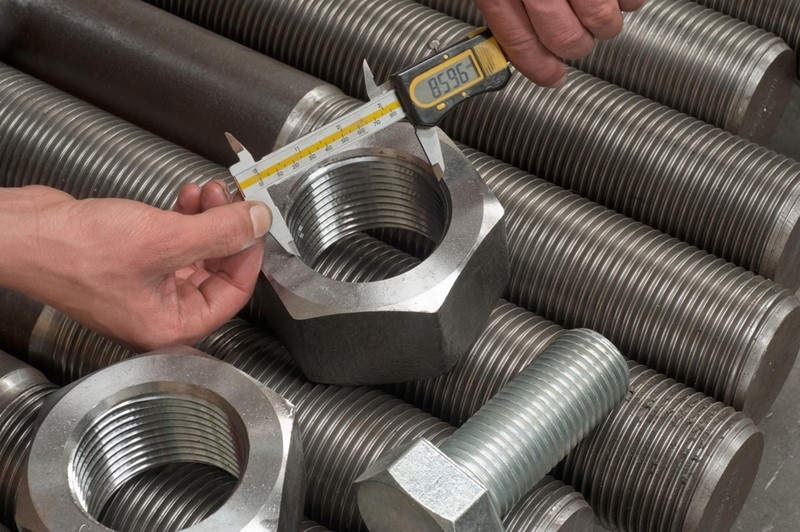-
Subscribe to Blog:
SEARCH THE BLOG
CATEGORIES
- Aerospace
- Asset Maintenance
- Automotive
- Blog
- Building Products
- Case Studies
- Chemical Processing
- Consulting
- Food & Beverage
- Forestry Products
- Hospitals & Healthcare
- Knowledge Transfer
- Lean Manufacturing
- Life Sciences
- Logistics
- Manufacturing
- Material Utilization
- Metals
- Mining
- News
- Office Politics
- Oil & Gas
- Plastics
- Private Equity
- Process Improvement
- Project Management
- Spend Management
- Supply Chain
- Uncategorized
- Utilities
- Whitepapers
BLOG ARCHIVES
- September 2025 (1)
- August 2025 (2)
- July 2025 (2)
- June 2025 (4)
- May 2025 (1)
- April 2025 (1)
- March 2025 (1)
- February 2025 (4)
- January 2025 (4)
- December 2024 (4)
- November 2024 (2)
- October 2024 (6)
- September 2024 (5)
- August 2024 (5)
- July 2024 (6)
- June 2024 (3)
- May 2024 (3)
- April 2024 (4)
- March 2024 (3)
- February 2024 (4)
- January 2024 (5)
- December 2023 (2)
- November 2023 (1)
- October 2023 (6)
- September 2023 (3)
- August 2023 (4)
- July 2023 (2)
- June 2023 (3)
- May 2023 (7)
- April 2023 (3)
- March 2023 (3)
- February 2023 (5)
- January 2023 (6)
- December 2022 (2)
- November 2022 (5)
- October 2022 (5)
- September 2022 (5)
- August 2022 (6)
- July 2022 (3)
- June 2022 (4)
- May 2022 (5)
- April 2022 (3)
- March 2022 (5)
- February 2022 (4)
- January 2022 (7)
- December 2021 (3)
- November 2021 (5)
- October 2021 (3)
- September 2021 (2)
- August 2021 (6)
- July 2021 (2)
- June 2021 (10)
- May 2021 (4)
- April 2021 (5)
- March 2021 (5)
- February 2021 (3)
- January 2021 (4)
- December 2020 (3)
- November 2020 (3)
- October 2020 (3)
- September 2020 (3)
- August 2020 (4)
- July 2020 (3)
- June 2020 (5)
- May 2020 (3)
- April 2020 (3)
- March 2020 (4)
- February 2020 (4)
- January 2020 (4)
- December 2019 (3)
- November 2019 (2)
- October 2019 (4)
- September 2019 (2)
- August 2019 (4)
- July 2019 (3)
- June 2019 (4)
- May 2019 (2)
- April 2019 (4)
- March 2019 (4)
- February 2019 (5)
- January 2019 (5)
- December 2018 (2)
- November 2018 (2)
- October 2018 (5)
- September 2018 (4)
- August 2018 (3)
- July 2018 (2)
- June 2018 (4)
- May 2018 (3)
- April 2018 (3)
- March 2018 (2)
- February 2018 (2)
- January 2018 (1)
- December 2017 (1)
- November 2017 (2)
- October 2017 (2)
- September 2017 (1)
- August 2017 (2)
- July 2017 (2)
- June 2017 (1)
- April 2017 (3)
- March 2017 (3)
- February 2017 (2)
- January 2017 (2)
- December 2016 (2)
- November 2016 (4)
- October 2016 (4)
- September 2016 (3)
- August 2016 (6)
- July 2016 (4)
- June 2016 (4)
- May 2016 (1)
- April 2016 (3)
- March 2016 (4)
- February 2016 (2)
- January 2016 (4)
- December 2015 (3)
- November 2015 (3)
- October 2015 (1)
- September 2015 (1)
- August 2015 (4)
- July 2015 (6)
- June 2015 (4)
- May 2015 (7)
- April 2015 (6)
- March 2015 (6)
- February 2015 (4)
- January 2015 (3)
CONNECT WITH US
Tag Archives: Virtualization
Innovation is driven by technological advancements, but far too often, manufacturers across all industries are overly concerned with how to bring the cutting edge to their products as opposed to their processes. The Big Data movement, canonized the world over as the saving grace for the burgeoning deluge of computerized information, allows businesses to do astronomically more in regards to customer relations and demand forecasting than once thought possible – that is, these companies can create a friction-less environment in which they can consume data at nigh-negligible costs, and apply their findings with minimal oversight and spend, resulting in momentous value-add potential.
But without the proper IT architecture in place, this can only be a pipe dream for businesses unwilling to bump up internal technological resources directly connected to production, be it the process or the product. Applications designed to monitor and control lean manufacturing initiatives can enhance the industries that bring them aboard, so long as these applications in question put the horse back before the cart, so to speak. What process improvements can be made to data-intensive operations using objective-minded management?

In manufacturing, measurement is everywhere, including data and process improvement.
Performance measurement
Believe it or not, metrics utilization isn’t just for the world of business – these days, the average individual uses a number of different “signals” to interact with the world around them, like how smartphone apps let hurried commuters know exactly what time public transportation pulls out of the station. In a sense, even low-tech devices like a car’s fuel gauges serve roughly the same purpose: conglomerating disparate information under a single, user-friendly visualization. In recent years, gas tank telemetry has evolved beyond simply stating fractions, but estimating how many miles a driver has left before refueling becomes a necessity. This is a much more actionable unit of measurement for this particular metric, as it assumes drivers won’t want to fill up unnecessarily as a means of saving money and time if it can be avoided without hindering functionality.
In a manufacturing plant, similar rules apply, but as industries grow more and more complex, production metrics continue to include more dimensions and incorporate larger volumes of data. However, the end results must be just as easy to understand and act on, perhaps even more so. Additionally, all manufacturers charting key performance indicators (KPIs) do so as these metrics relate to their own operations. Lean or Six Sigma only works so far as companies can identify their own shortcomings and apply these systems like antiseptic to a wound. According to a study by the faculty of manufacturing engineering at the Technical University of Malaysia, more often than not, KPIs “reflect the company’s mission, vision, objectives, and goal which are key imperatives to the company’s success,” especially when it comes to employee management. Any worthwhile application managing KPIs and alerting decision-makers as to vital data must therefore be as reliable as it is flexible to specific needs.
“Data from the end of a given process should inform operations at the very beginning.”
Process Improvements
Collecting and reporting on terabytes of data is one thing, but what can the right data management platform do to streamline tangible on-site workflow? Operational process improvements and efficiency can be gained through data management applications driven by lean manufacturing principles like kanban, or a system of inventory control where production information acts as a catalyst. The popular “pull, don’t push” paradigm used throughout manufacturing finds a home here as well. Data from the end of a given process should inform operations at the very beginning to promote efficient resource spend and temper production based on throughput potential. If a popular nightclub reaches capacity but the bouncer continues to allow guests entry, it creates an unsustainable and unsafe situation for everyone involved. However, if that same bouncer grants access based on how many guests leave, the venue can serve the most patrons without causing a commotion.
That said, as the Massachusetts Institute of Technology outlines, small discrepancies in different kanban-focused data management tools could actually stifle objective-based process improvements and detract from lean manufacturing practices. Certain lean manufacturing data management assets compartmentalize different actions in a given process and assign products within production as “carriers of information.” Returning to the nightclub analogy, if the bouncer has to occasionally go into the club and manually count occupants, this can create inefficiency and can convince people waiting in line for admission to seek out another place to spend their Friday night. But if that bouncer uses a counting device at the door, he or she can immediately respond to a happy party leaving as the impetus for allowing more people in. Similarly, manufacturers shouldn’t be “counting heads” so much as they should ensure their process improvements made to process management applications assign throughput data its proper role as a production instigator. In doing so, manufacturers avoid bottle-necked workflow and any resulting downtime, upgrading their efficiency through more intelligent datalogical deployments.
In the coming decades, the field of medical device manufacturing will be put to the test. According to new U.S. Census Bureau estimates, more than 75 million baby boomers are reaching retirement age in the near future. Now more than ever, healthcare in general will need to find a functional way to accommodate so many late-in-life patients. And seeing as the number of millennials exceeds 83 million, a long-term solution is vital to the industry’s success. A system must be put in place that both adequately provides services to baby boomers today and is sustainable enough to at least lay the foundation for healthcare’s future. After all, the U.S. population is only getting bigger.
Medical device manufacturing will play a large, active role in how U.S. healthcare reinvents itself in the modern age, especially with the rise of the Internet of Things, a growing inter-operable network of wirelessly connected devices. A Goldman Sachs report on medical technology found devices like implantables and other forms of monitoring equipment have the power to lower healthcare costs for both providers and patients. Since cost stands among the single greatest concern for both parties, innovations in medical device manufacturing can be considered one of the most crucial drivers piloting this healthcare revolution.
That said, if medical device manufacturers cannot develop new equipment with quickness and efficiency, the medical industry as a whole loses a level of responsiveness it will desperately require during this transitory period. This industry can increase its efficiency by optimizing its research and development stages to help build an advanced infrastructure of digital awareness that will make low-cost, high-tech healthcare a reality?
“Manufacturers allocate more money to R&D, but generate fewer products
Never compromise on quality – reinforce it with process mapping
A study published in Nature Reviews Drug Discovery stated during the last six decades, the number of new treatments created for every $1 billion spent on research and development has declined by around 50 percent every nine years. In short, drug and medical device manufacturers allocate more money to R&D, but generate fewer products. Though this factor may indicate a need for efficiency improvements during a given product’s clinical trial stages, for the time being, manufacturers have no other choice but to find areas in R&D to cut for the sake of cost efficiency.
However, regulation from the Food and Drug Administration has only become more stringent in the last few decades with little sign of loosening. Reducing costs, therefore, should not jeopardize quality of the products under review.
Unconnected though it may seem, envisioning better layouts of a medical device manufacturer’s work cells on the production floor can increase efficiency by improving throughput and reducing resource costs, but potentially also improving a device’s quality. According to CIRTEC Medical Systems, O- and U-shaped production lines as well as intelligently placed tools and materials at every workstation increase efficiency by both reducing wasteful movement and action. Instead of hiring more employees or scaling up costly assets, manufacturers could instead strengthen R&D and standard operations through process mapping to gain a substantial efficiency margin.
Efficiency gains in one area often bolsters success in another. Streamlining R&D means manufacturers are able to move into the production stages faster. Reducing waste in manufacturing creates a greater pool of resources to encourage innovation in R&D

Medical device manufacturers can integrate new technology into their operations
In-house tech takes center stage in R&D, innovation timeline
As we just touched on, rudimentary organizational upgrades can impact operational efficiency in extraordinary ways. Outside of the production floor, however, there are plenty of other opportunities to incorporate more consolidated, actionable lines of inter-departmental communication to that very end. But before the medical device manufacturing industry can accomplish those goals, companies within may need to overcome certain stigmas regarding the on-boarding of new internally facing technology.
A poll conducted by PricewaterhouseCoopers found executives in medical device manufacturing expect increases in innovation, but around 86% have yet to focus their directives on enhancing the processes directly related to fast-tracking new products from R&D through their releases to market. Moreover, of the executives surveyed, only 12% use advancements like mobile technology, data analytics, and cloud technology to “create new business models that center on clinical and consumer dynamics.”
While these technological additions to the world of medical device manufacturing cannot purport any innate efficiency improvements, their absence in an industry dedicated to the advancement of healthcare through state-of-the-art computerized machinery doesn’t make much sense. As the nature of patient care turns a corner, so too should the organizations leading the charge, which means laying the groundwork for more intelligent, responsive health services through the integration and development of dynamic digital assets that allow employees to communicate data comprehensively.
To learn more about the importance of medical device design, check out Toptal’s article Prioritizing Health Pros’ Pain Points in Connected Medical Device Design
Most companies are experts in their respective fields, but still struggle to make progress in their continuous improvement initiatives. This is why you should rely on the expertise of skilled consultants to help you determine and monitor the right key performance indicators (KPIs). Having the right KPIs helps you achieve your desired results.
Choose the right KPIs and monitor them
A big part of developing stronger management techniques is knowing which numbers to keep track of. Many executives base their managerial style on end results and forget that syncing current processes with end goals is the only way to achieve lasting success. If you find that your planned improvements are not materializing in the way you expected, you might want to focus on making KPIs more central to your management philosophy. Additionally, try to make sure that your KPIs are linked to actionable items. For example, when attempting to raise efficiency at your manufacturing plant, the right KPIs tell you where you are in relation to where you want to be. If faster changeovers is what you need, your areas for improvement should be clearly indicated in process documents. Accordingly, you can focus on maintenance, schedules, idle time, staging areas, or whatever issue is causing the delay in production.
Often, consulting engagements involve a process of re-education where clients are shown a better way to use their existing systems. Just because a particular company has skilled technicians and makes a good product does not mean they are operating at maximum potential. If you believe you have areas where you can improve, ask yourself these questions: Are you focusing on the right outputs? Do you interpret your reports correctly? Are you getting information from the plant floor with the necessary frequency?
“Integrate your technology systems and tools with existing processes.”
Technology is secondary to processes and training
You have sophisticated systems in your facilities. You might even think that the various projects you have planned, such as manufacturing line optimization, reliability centered maintenance, and installing smart sensors can get you closer toward your production goals. While that may be true, knowing how to use your technology well is of paramount importance. By bringing in outside perspectives, you can realize where your technology systems and tools may be out of sync with your operation processes. A new set of eyes can help you see how your technology systems and existing processes should work together, then assist you in teaching your staff on best practices related to the equipment. Automation alone will not solve your problem in the same way that having more workers does not necessarily mean more productivity.
Embedding your existing technology in processes and training, you will find that you can significantly bolster the bottom line. This type of management approach is also greatly aided by automated data capture and having a sophisticated management operating system. Armed with these tools, you can make lasting changes at your facility.
Train employees to become project stakeholders
One of the first things a good consultant should do at your site is identify key personnel that can carry the changes and promote new methodologies going forward. Keep in mind, training stakeholders on how to effectively use KPIs, integrate automated data capture, and document processes ensures that improvements continue to take place long after a project is officially over. You can also rely on these staff members when training new employees on best practices.
Some companies like to focus on the financial information, other companies lean toward engineering metrics and raw data. Either way, by putting certain individuals in charge of the KPIs that matter the most, you can make the continuous improvement methodology work for you.

Having the right KPIs lets you leverage all of your assets to work in unison.
Linking disparate systems together
It is not unusual for companies to have disparate systems, from different eras, located in one facility. If this is true for you, you may not need to replace your current equipment, but you do need to match outputs from the assets to achieve uniformity. An operations consultant can help you connect the outputs from different machinery for accurate KPI reporting. Also, if you rely on dozens of computer platforms to manage your assets, virtualization could be your next step toward efficiency.
Virtualization offers firms the opportunity to consolidate IT assets, reduce expenditure, and update applications from one central location. Perhaps plant equipment will remain the same, but the software and execution system you use to manage those assets can help unify them. This can greatly strengthen your IT capability.
As previously mentioned, addressing processes is an essential part of optimizing plant production. The more diligent and organized you are about updating your standard operating procedures, the easier it will be for you to achieve consistency in workflows and train staff on best practices. Today, technology is advancing faster than people are gaining skills and expertise. If inefficiencies continue to bother you, fix your current way of doing things. Then a new automated system can follow.
In manufacturing, virtualization helps companies by simplifying the management of IT and operational assets. Dealing with complex plant systems, tons of data, and tightly defined processes, manufacturers benefit from easier access to plant floor operations and control systems. Engineers can get the most out of technology systems by leveraging the convenience of virtualization. Sen. Amy Klobuchar told CNBC that manufacturing today is defined by advanced technological capability.
“The reality is that today’s manufacturing workers are as likely to operate robots as they are wrenches, and use math more than muscle – this isn’t your grandpa’s factory floor,” wrote Klobuchar.
Virtualization can improve IT efficiency, save time and reduce costs
Manufacturing Business Technology explained that the benefits of virtualization include hardware consolidation, less energy consumption, improved application load time, disaster recovery, and easier streamlining of processes. Because virtualization calls for hardware independence, it is much easier to manage software across a facility and implement changes. With individual terminals receiving information from one management operating system, the points of access are significantly reduced. Virtualization also enables companies to use servers to run multiple applications without conflict.
Consolidating hardware benefits manufacturers because IT and maintenance staff will spend less time moving from one terminal to the other, and they can spend more of their time focused on facility-wide technology concerns. Manufacturing Business Technology pointed out that virtual machines can extend the software lifecycle over 10 years. Additionally, because virtual terminals require much less energy than full platforms, virtualization results in energy savings for a plant.
Centralization of operational resources is easier with virtualization
Using virtualization, operators are able to access their workstations through a multitude of devices, noted Manufacturing Business Technology. Another main benefit to a virtualized environment is that critical hardware is kept out of harm’s way. Should something happen to a remote terminal, it can be easily replaced without having to rebuild software and load applications. It is important to mention that, using sophisticated virtualization configurations, operators can have the same functionality as if they were accessing the management operating system itself.
“Critical hardware is kept out of harm’s way.”
Another critical feature of virtualization is that it can make the streamlining of processes much easier. Since work applications and documents are centralized and rolled out to the individual terminals, this helps prevent data duplication, limit inconsistencies, and continually keeps operators and technicians on the same page with respect to new processes, or work protocols. Additionally, virtualization allows for better workflow management because an engineer can set up permissions that designate who can access which production process and when.
Disaster recovery is made easier through virtualization
Virtualization is also helpful as a disaster recovery plan, noted Manufacturing.net. Most manufacturers know that system failures are a real possibility. Problems with controls, execution systems, or automated equipment can bring production to a halt altogether. System failures increase downtime, which can significantly impact revenue negatively. As such, it is important to have a plan in place that both protects the systems that run the hardware, and recovers them should they suddenly fail. Unlike with traditional systems, virtualization is easier to manage because of the centralized aspect, and it also eliminates the need for reinstallation and configuration – should the worst happen. Since virtual machines are already configured, the hours spent reconfiguring a traditional system can be put to better use elsewhere.

Virtualization can help companies better manage IT assets.
Virtualization offers a high return on investment
Tony Baker, Product Manager at Rockwell Automation told Manufacturing Business Technology, virtualization will eventually represent at least half of all automated systems in a manufacturing environment.
“In the world of corporate IT, 65 percent of new applications this year will be deployed in a virtual environment,” wrote Baker. “I would say that 10 to 15 percent of automation applications are now being deployed in a virtual environment. That’s up from almost zero a year ago. Virtualization is gaining traction and I expect that half of all automation applications will leverage virtualization in the next 5 years.”
The benefits of virtualization are too many to ignore. In terms of return on investment, virtualization will help companies raise efficiency, lower IT expenses, protect their production assets, and streamline processes across a facility. The cost benefit of these efficiencies far outweighs the initial investment in virtual terminals and the miscellaneous expenses it will require.





